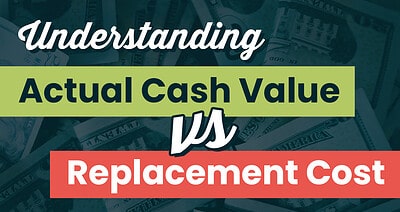
Usage-Based Insurance (UBI) Telematics: How it Works
August 16, 2022
Share:
You’re a good driver with a clean slate, impeccable road behaviour, and you always adhere to traffic rules. Shouldn’t you be rewarded for these kinds of habits? Now you can be! Enter usage-based insurance and telematics: the new technology and method of calculating insurance premiums that can reward you for good driving behaviour, low distance traveled, and even seat belt usage.
How does it work? How do insurers get this data?
What is telematics?
Telematics helps provide important metrics for insurers to use to calculate your premiums. Telematics is technology that can track the following data:
- The speed of your vehicle
- Distance travelled
- Time of commute
- Engine data
- Abrupt braking or accelerating
- Idling time
- Positioning of the vehicle on the road
This data is retrieved by a telematics device – either in the form of a black box plugged into your OBD II port/CAN-BUS or even as a mobile application – and sent into a cloud. This data is then analyzed by insurance providers to determine overall driving behaviour, habits, patterns, and determines a trend by which your premiums can then be calculated.
What is the difference between telematics and usage-based insurance?
Usage-based insurance (UBI) boils down to a method of “pay-as-you-drive” or “pay-per-kilometer” and has gained popularity within North America over recent years. Depending on the insurer’s specific program, as they can differ from provider to provider, usage-based insurance will calculate premiums based on how far a vehicle is driven in a given span of time. Usage-based insurance may also calculate premiums based on how the vehicle is driven and where it is driven. It is typically powered by telematics – i.e, the technology that provides insurers the data they need to determine premiums.
Where usage-based insurance is the means of calculating premiums based on driving habits and distance, telematics is the technology that provides data for these metrics and comes in the form of a plug-in device or pre-installation. It can also exist as a mobile application.
What is telematics data used for?
The data that is derived from telematics technology can be used for several things. Telematics help ensure the safety of drivers and guide them to better driving habits in return for lower insurance premiums. Even if you do not feel you are the most confident of drivers or are even a newer driver, telematics technology may make you more mindful of your driving habits and keep you accountable for your behaviour while on the road.
Commercial enterprises with fleets may also use telematics to determine how their employees are handling their vehicles. Data can determine how drivers are using their vehicles and if they are exhibiting any risky behaviours like jamming on the breaks, accelerating too fast at green lights, speeding, idling, and costing additional money in fuel consumption. This can help to save the company money in the long run as they can then use this data to cut down on unnecessary expenses. Even smaller companies that only have a couple of commercial vehicles can use telematics, as well as government organizations and non-profits.
Usage-based insurance for lower premiums
If you use your car only once in a while and opt for public transportation for your daily commute, you may elect to try out a telematics program for usage-based insurance to reduce your premiums. Your driving record already reflects your road behaviour – so why shouldn’t your premiums? Keep in mind that how you drive your vehicle is just one of a number of factors contributing to your rates – where you live, the model and make of the car you drive, and your personal demographics are also taken into consideration when your rates are calculated. That being said, you can cut down on costs with usage-based insurance if you feel as though you are a good driver with mindful habits.
Usage-based insurance allows you to customize your insurance to the way you drive and how often you drive. Often, usage-based insurance will utilize telematics to monitor your overall distance driven and driving behaviours and may reward you with the benefit of certain insurance discounts.
Generally, insurance companies may offer telematics devices for customers to use for around a period of 180 days – during which time the device will record the vehicle’s internal data and send it up for providers to analyze. If your result is considered “favourable” by your insurance company, you may qualify for a discount of up to 25%.
Telematics may encourage safer driving
While telematics can’t make a poor driver into an amazing one, it can curb risky behaviours, unnecessary speeding and idling, and even prompt forgetful drivers to remember to put on their seatbelts. Think of it like a rewards program for being a good driver: the more mindful you are on the road and the better driving behaviours you exhibit, the more likely you are to benefit from an insurance discount. Telematics programs and technology encourage drivers to maintain caution, overall resulting in fewer accidents on the road and reducing the risk of insurance fraud.
Telematics programs allow you to prove that you are a safe driver. If you are interested in a program that utilizes a telematics device to measure you’re driving in exchange for a reduced rate, contact Excalibur Insurance today to discuss your options.
Learn more about the telematics and usage based insurance we offer:






